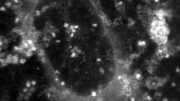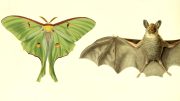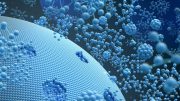
Researchers isolated and identified the genetic profile of beige fat for the first time, suggesting its therapeutic potential for obesity treatment.
A team of researchers isolated and determined the unique genetic profile of beige fat for the first time, finding that beige fat is genetically distinct from brown fat and may have therapeutic potential for treating obesity.
Scientists at Harvard-affiliated Dana-Farber Cancer Institute have isolated a new type of energy-burning fat cell in adult humans, which they say may have therapeutic potential for treating obesity.
Called “beige fat,” the cells are found in scattered pea-sized deposits beneath the skin near the collarbone and along the spine in adult humans. Because this type of fat can burn calories — rather than store them, as “white fat” cells do —beige fat cells might spawn new therapies for obesity and diabetes, according to researchers led by Dana-Farber’s Bruce Spiegelman, the Stanley J. Korsmeyer Professor of Cell Biology and Medicine at Harvard Medical School.
Spiegelman is the senior author of a report scheduled for advance online publication on July 12 in the journal Cell. The print issue of Cell will publish on July 20.
The study found that beige fat is genetically distinct from “brown fat,” another type of fat that also burns calories to generate heat. Brown fat is found in small mammals and human infants, where it protects against harm from cold. White fat, on the other hand, stores calories, and excess white fat contributes to obesity.
Existence of this third type of fat (beige fat) had been proposed in a paper by Spiegelman’s lab in 2008, but the Dana-Farber team is the first to isolate it and to determine its unique genetic profile. In the new report, Spiegelman’s team, led by first author Jun Wu, found that beige cells are specifically targeted by the hormone irisin, which muscle cells express during exercise.

Bruce Spiegelman heads a team that investigated a little understood type of muscle fibers in mice and humans. They found a genetic switch that might be turned on in both animals to treat diseases like muscular dystrophy and paralysis, and to enhance athletic abilities (sort of a genetic steroid.). Bruce Spiegelman (right) is pictured with his colleague Zoltan Arany (left) in their lab at Dana Farber Cancer Institute. Credit: Stephanie Mitchell/Harvard University News Office
In 2009, three research groups reported that fat deposits found in adult humans contained brown fat, but the new research has identified them as beige fat by their genetic makeup.
“Going forward, it means that what you want to study for potential therapies are the beige fat cells in these ‘hot spots’ we’re all walking around with,” said Spiegelman.
Even in small quantities, brown and beige fat can burn large amounts of calories.
“The therapeutic potential of both kinds of brown fat cells is clear,” the authors write in the Cell article, “as genetic manipulations in mice that create more brown or beige fat have strong anti-obesity and anti-diabetic actions.”
Both types of fat contain energy-burning organelles called mitochondria, which contain iron and are the cause of the brown and beige hues. A key difference is that brown fat cells express high levels of UCP1 — a protein required by mitochondria to burn calories and generate heat — while beige cells normally express low levels of it. Beige cells can, however, turn on high levels of UCP1 in response to cold or certain hormones such as irisin, enabling beige fat to burn calories nearly as effectively as brown fat.
Spiegelman has published a series of discoveries about the different fat cell types. Brown fat cells, he found, are born from stem cell precursors that also produce muscle cells. Beige fat, however, forms within deposits of white fat cells from beige cell precursors.
Earlier this year, he reported the discovery of irisin, a hormone produced by muscular exercise that can convert white fat to brown fat. In the new Cell report, Spiegelman says that irisin specifically stimulates white fat to produce beige fat. Dana-Farber has licensed both discoveries to Ember Therapeutics, a biotech company founded by Spiegelman, which plans to develop irisin as a therapy for obesity and diabetes.
Reference: “Beige Adipocytes Are a Distinct Type of Thermogenic Fat Cell in Mouse and Human” by Jun Wu, Pontus Boström, Lauren M. Sparks, Li Ye, Jang Hyun Choi, An-Hoa Giang, Melin Khandekar, Kirsi A. Virtanen, Pirjo Nuutila, Gert Schaart, Kexin Huang, Hua Tu, Wouter D. van Marken Lichtenbelt, Joris Hoeks, Sven Enerbäck, Patrick Schrauwen and Bruce M. Spiegelman, 12 July 2012, Cell.
DOI: 10.1016/j.cell.2012.05.016
In addition to Spiegelman and Wu, the report’s authors include researchers from Maastricht University Medical Center in the Netherlands, the University of Gothenburg in Sweden, and the University of Turku in Finland.









Be the first to comment on "Beige Fat May Have Therapeutic Potential for Treating Obesity"